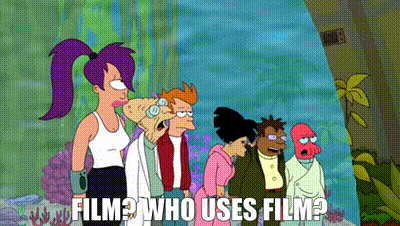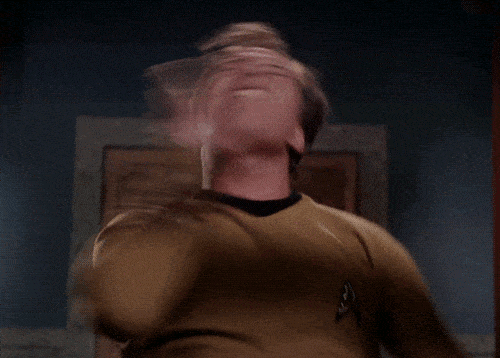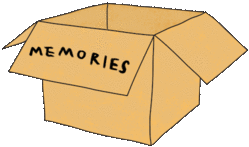Let’s face it, film folks. Adulting is a scam. You spend your youth chasing that ever-elusive “dream job” only to realize it involves staring at spreadsheets until your retinas detach. Rent keeps climbing like a particularly ambitious toddler, and that avocado toast you keep hearing about?
Forget it, unless your idea of a balanced breakfast involves scraping the pit for sustenance. But hey, at least you can capture those precious moments of existential dread on your phone, right? Wrong. Because that, my friends, is where film photography swoops in, like a metaphorical falcon diving at a particularly comfy mouse (that mouse being your financial stability).
Affiliate Disclosure: As an Amazon Associate I earn from qualifying purchases. Purchasing via provided links/banners comes at no additional cost to you. Analog Dayz only recommends products and/or services that are insightful and helpful to readers. For more info please read our Affiliate Disclaimer.
Why a Million Megapixels Can’t Replace the Thrill of the Film Photography
Sure, your phone takes decent pictures. It can even slap a faux-vintage filter on them for that “I’m deep” aesthetic. But let’s be real, there’s something undeniably sterile about digital. Everything’s so instant, so perfect. Where’s the grit? The grain? The agonizing wait to see if you accidentally left the lens cap on (because the film doesn’t have a handy notification to tell you like a nagging digital babysitter).
Film photography, on the other hand, is a commitment. You gotta choose your weapon wisely – a clunky, second-hand SLR from a thrift store overflowing with questionable smells, perhaps? Maybe a chic rangefinder that looks like it belongs in a Wes Anderson flick?
Then there’s the film stock itself, a veritable smorgasbord of options, each promising a unique flavor of imperfection. Do you go for the classic Kodak Portra? The moody black and white of Ilford? It’s a no-win scenario for us, forcing you to confront the existential void before you even click the shutter.
The Exquisite Torture of Waiting
Ah, the anticipation. You’ve meticulously framed your shot, sweated over your film choice, and finally captured that fleeting moment of, well, whatever it was you were pointing your camera at. Now comes the real fun: the wait. You drop off that precious roll of film, a tiny vessel carrying your hopes and dreams (and maybe a blurry picture of your cat). Days turn into weeks, each notification on your phone a potential harbinger of photographic glory (or, more likely, a reminder that you forgot to pay your electricity bill).
Finally, the email arrived. “Your photos are ready!” You practically sprint to the store, heart pounding like a bass drum solo. Will your masterpiece be there? Did you nail the exposure? Or did you accidentally capture the ghost of your roommate’s questionable eating habits reflected in the fridge door? The suspense is enough to make you question every life choice that led you to this point.

When the Analog Gods Smile (or Slap You in the Face)
And then, the moment of truth. You unwrap the neat little packet, the anticipation crackling in the air like static electricity. One by one, you peel back the protective sleeves, each frame a potential portal to a bygone era (or, more realistically, a blurry mess of overexposure). But hey, there’s always the chance you stumbled upon accidental brilliance! That grainy shot of your dog mid-sneeze could be the next internet meme sensation. That out-of-focus picture of your friend making a funny face might just spark a philosophical debate about the nature of reality.
Of course, the reality is often less glamorous. You might be greeted by a symphony of light leaks, a chorus of missed focus, and a lead singer belting out a heartbreaking rendition of “blown highlights.” But that’s the beauty (and occasional despair) of film. It keeps you guessing and keeps you honest. It forces you to slow down, to savor the process, and to appreciate the happy accidents that digital photography so ruthlessly eliminates.
I want to keep memories cheap
The good news, broke peeps, is that there are ways to keep your film photography habit from turning into a full-blown financial meltdown. Here’s how to capture those precious memories without sacrificing your next avocado toast purchase:
- Thrift/Marketplace Store Showdown: Ditch the overpriced camera stores and hit the thrift or online marketplace shops. You might just score a sweet, second-hand camera that’s seen more action than a disco ball in the 70s. Just remember, a little TLC and some elbow grease can turn that dusty relic into your next masterpiece (or at least a functioning camera).
- Black and White on a Budget: Who needs fancy colors when you have timeless black and white? Not only is it a classic look, but black and white film is generally cheaper than its color counterpart. Plus, developing black and white is easier on your wallet too. Think of it as the ramen of the film world – cheap, filling, and surprisingly artistic.
- Become a Shot-Blocking Sniper: Forget endless digital snaps. Film forces you to be more mindful, like a lone wolf stalking its prey (except your prey is a good photo op, not a gazelle). Think before you click. Not only will this save you precious film and development cash, but it might even lead to you taking some halfway decent pictures (hey, a win’s a win).
- DIY Developing: Not for the Faint of Heart: This one’s for the truly adventurous cheapskates. Developing your film can be a cost-effective option, but it’s not for the easily discouraged. Be warned: it involves chemicals, darkness, and the potential to turn your bathroom into a scene from a Breaking Bad knock-off. But hey, if the risk of a technicolor meltdown doesn’t scare you off, then the savings might just be worth it.
- Imperfections are Your New BFFs: Let go of the need for digital perfection. The film is all about embracing the unexpected – the light leak that looks like a UFO sighting, the blurry shot that could be mistaken for abstract art. These “mistakes” add character and tell a unique story about the moment you captured. So next time you mess up a shot, don’t despair. Just channel your inner Andy Warhol and declare it a masterpiece. After all, in the world of film photography, broke is the new black (and white).
Ditch the Noodles and Fuel Your Film Dreams!
Film photography is an artistic and rewarding experience, but the cost of film and development can add up quickly. While everyone dreams of shooting expensive films such as Kodak Portra 400, Cinestill 800T, or Kodak Portra 800, why not opt for cheaper alternatives?
Fear not, thrifty film friends! Here are 5 film stocks to keep your film habit from derailing your financial stability (and still allow you to capture those precious memories):
- Kodak ColorPlus 200: A versatile and economical color film suitable for various lighting conditions.
- Fujifilm Fujicolor 200: Another budget-friendly option for color photography with vibrant tones.
- Ilford HP5 Plus: Renowned for its fine grain and versatility, perfect for B&W enthusiasts.
- Kodak Tri-X 400TX: A classic black and white film known for its rich tonality and flexibility.
- Kodak Gold 200: A budget-friendly option for color photography with natural colors and fine grain.

So, Is Film Photography for You? (Spoiler Alert: Probably Not)
Look, film photography isn’t for everyone. It’s expensive, it’s time-consuming, and the results are often unpredictable. But for those of us who crave a little chaos in our perfectly curated digital lives, it’s a beautiful form of self-inflicted torture.
It’s a reminder that the best things in life aren’t always instant and that sometimes the journey is just as important as the destination (even if that destination is a roll of completely unusable film).
So, if you’re looking to add a little extra financial strain and existential angst to your already-burdened adulting experience, then by all means, dive headfirst into the glorious vortex of film photography.
Embrace the unexpected, the grainy beauty, and the occasional soul-crushing disappointment. After all, isn’t that what life (and adulting) is all about?
Until next time, folks! Pssst, take a quick peek at my latest post.
P.S. Got any sneaky tips or tricks up your sleeve? Drop ’em in the comments below! Let’s keep the conversation rolling.




